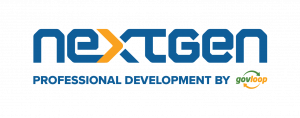“Conflict refers to any situation in which people have apparently incompatible interests, goals, principles or feelings,” said Rueben Perez, an esteemed faculty member at OPM’s Federal-Executive Institute-Center for Leadership Development. Speaking at a recent NextGen online training, he said that while conflict is inevitable, it’s not exclusively negative.
“Productive conflict focuses on concepts and ideas to produce the best possible solution. By learning how to encourage positive conflict, you can make it an effective tool for solving problems,” he explained.
Recognize Whether the Conflict is Personal or Task-Based
Task-focused conflict is related to the content and goals of the work. It focuses on ideas, not personalities. Its impact is positive, or at least neutral.
People-focused conflict originates in relationships: It’s about individuals, not ideas. Its impact is negative, and it can escalate quickly. Conflict over values — religion, politics, ethics, or even company priorities — will also have a negative effect. A constructive response steers away from personal issues and differences in values and focuses on the task.
Avoid Destructive Responses
Resist the impulse to see conflict as a contest you must win at all costs. Showing your anger, demeaning others, and retaliating are about winning, not collaborating. Your goal is to find a solution, not trounce your colleagues.
Resolution needs your participation. When you withhold your responses, conflict simmers and may burst forth later. While it does no good to rage, hiding emotions can be equally destructive. Avoiding the conflict altogether, withdrawing, just giving up your position, or resorting to excessive self-criticism all remove your contribution to the solution and risk building resentment.
Encourage Constructive Responses
Pause your commitment to being right, and listen to the people on the other side of the table. Hear what they are offering and incorporate it as you begin to create solutions. Bring the conflict back to the task.
It may help to acknowledge your emotions. Take time to reflect on your reactions. If you’re feeling frustrated, say so. If you need time to calm down, ask for it. Be the one to reach out to others. Think about whether, and how much, you may have contributed to the conflict. Then adapt your approach to incorporate your changed perspective.
Handle Conflict Before It Escalates
Although it can be helpful to delay your response while you consider your emotional reaction, don’t let the conflict go unaddressed too long. If you wait, the conflict may escalate, as people become adversarial, and their tactics get personal. Emotions build up and feelings get hurt. As time passes, the facts may fade as people rewrite what happened in their minds. Irrelevant issues get added to the pot. If you embrace conflict in a positive way and keep it constructive, there’s no reason to avoid it.
This online virtual training brought to you by:





